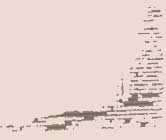


|
Varakhsha
Varakhsha (locates at a distance of 40 kilometers (25 miles) to the west from Bukhara; area – 100 ha (247 a); cultural layers – about 10 m. (33 ft.); most flourished in the period of the 7-th and 8-th centuries A.D.; collapsed in the 11-th century) is the site of ancient settlement with former
residence of Bukhar Khudas - the rulers of Bukhara in time before Arab invasion. Among other reasons for decline and following collapse of Varakhsha is often assigned an
irrigative dehydration of the area.
Historical significance of Varakhsha
Apart from the political and religious significance connected to its residence status, well-fortified Varakhsha was an
important military outpost on the western border of the oasis. It was also a considerable trade center situated on the road between Bukhara and
Khoresm and in the contact zone between the nomads and sedentary population. Varakhsha was also a major center of crafts. This statement is supported by the discovery of the traces of industrial quarters in Varakhsha's environs. In addition to it Varakhsha was the center of a large agricultural area "irrigated by the twelve canals".
Varakhsha played the important role in local history during the dramatic period of the
Arab conquests. At that time, the old Bukhara ruling family moved the royal court to Varakhsha, thus turning it into the scene of many tragic events of their dynastic history.
Varakhsha excavations
The large-scale archeological investigations of ancient cultures of the area started in the second half of the 1930s. Soviet archaeologist
Vasilii Shishkin became the real discoverer of Varakhsha in 1937. Once on the site, Shishkin noticed the outlines of rooms on the surface of the elevation to the east of the citadel. This looked promising, and the first excavation spot was set there. One of the rooms turned out to be filled with the fragments of
ornamental and figurative decorative stucco in early (what was then considered Sasanian) style. This find became a true archaeological sensation. That is how the
palace of Varakhsha became the very first Sogdian monumental edifice to undergo archaeological excavations.
The palace of Varakhsha
The palace is the only archaeologically known Sogdian architectural structure, which has a written history. Indeed, in the
Tarikh-i Bukhara composed in 332 AH/943-4 A.D. by Muhammad ibn al-Narshakhi there is a special passage devoted to this building. According to Narshakhi it was built “more than a thousand years ago”. “This palace had been destroyed and abandoned for many years when
Khnk Khudah restored it. It again fell into ruins, and again
Bunyat b. Toghshada, Bukhar Khudah, rebuilt it in Islamic times and made his court there till he was killed in it. [Narshaki - Frye 1954, pp. 17-18]
The original building of the palace dates to the reign of Khunak (689-709 A.D.). The first remodeling took place during the reign of Toghshada and the paintings on the blue background (the
Eastern Hall and an early layer of paintings in the Red Hall) most likely belong to the period of his “apostasy” around 719. The new paintings of the Red Hall belong to the later part of Toghshada’s reign, which ended in 738 A.D.. The fourth stage in the history of the building was connected to the enthronement of his son
Qutaiba b. Toghshada (738-753 A.D.). Finally, Buniyat b. Toghshada (753-782) was responsible for the major reconstruction of the palace and the first stucco decoration. He was assassinated for his supporting of
Mukanna’s anti-Arabic insurrection (70-80 of the 8-th c.)
The content and genre characteristics of the Varakhsha paintings as well as their fate reflect the political instability of the time and the dubious position in which the rulers of Bukhara found themselves. Bukhar Khudas had to balance between their own pretension to rule over the Bukharan oasis and the overwhelming power of the Arabs. This position required a sophisticated maneuvering between the old national and religious traditions on the one hand and the attempt to present themselves to Arabs as pious converts to Islam on the other.
Sources
1.
Dmitriy Page. The Guide to Bukhara. History and sights.
2. Дмитрий Пэйдж. Бухара.
Путеводитель по архитектурным и историческим достопримечательностям
See also
1.
Варахша
2.
Warahscha
3. Bukhara Map
|








